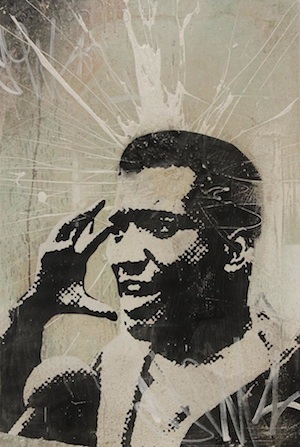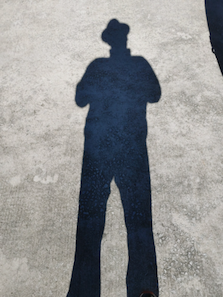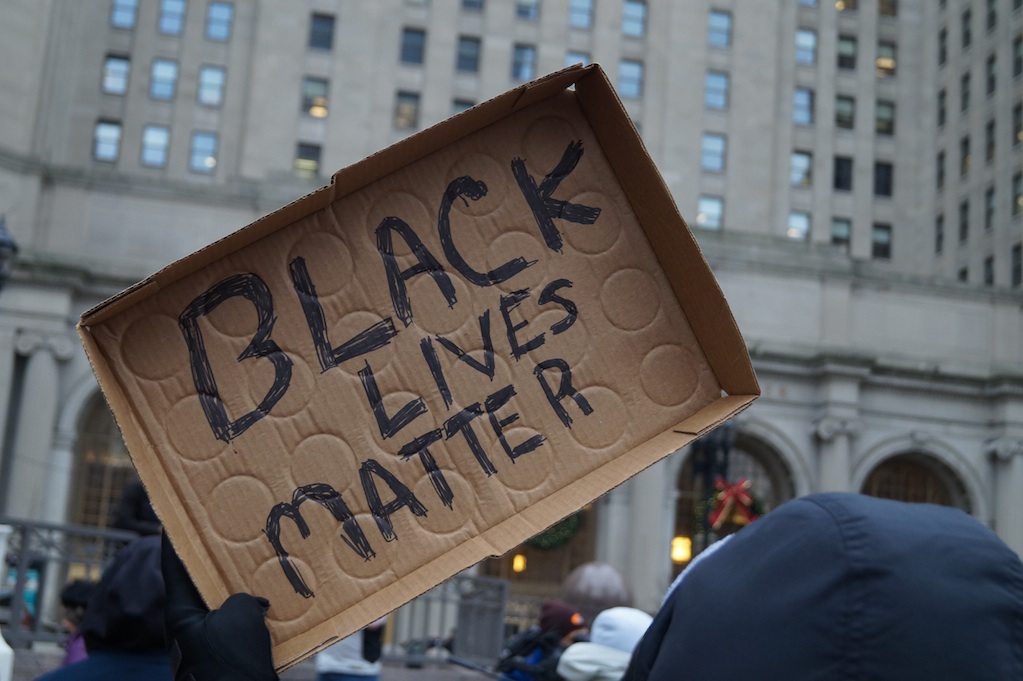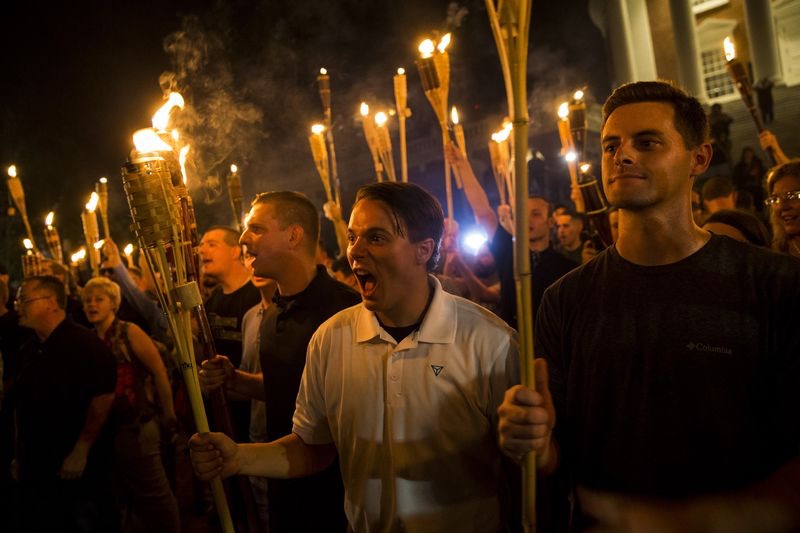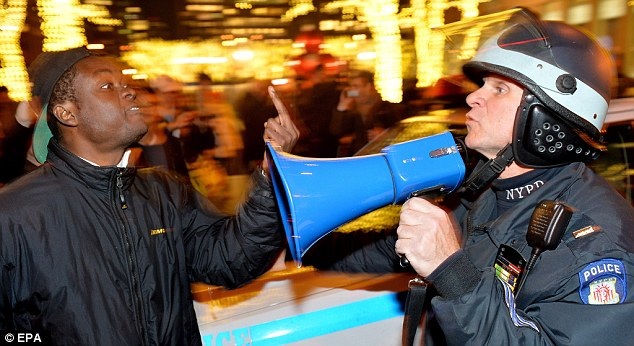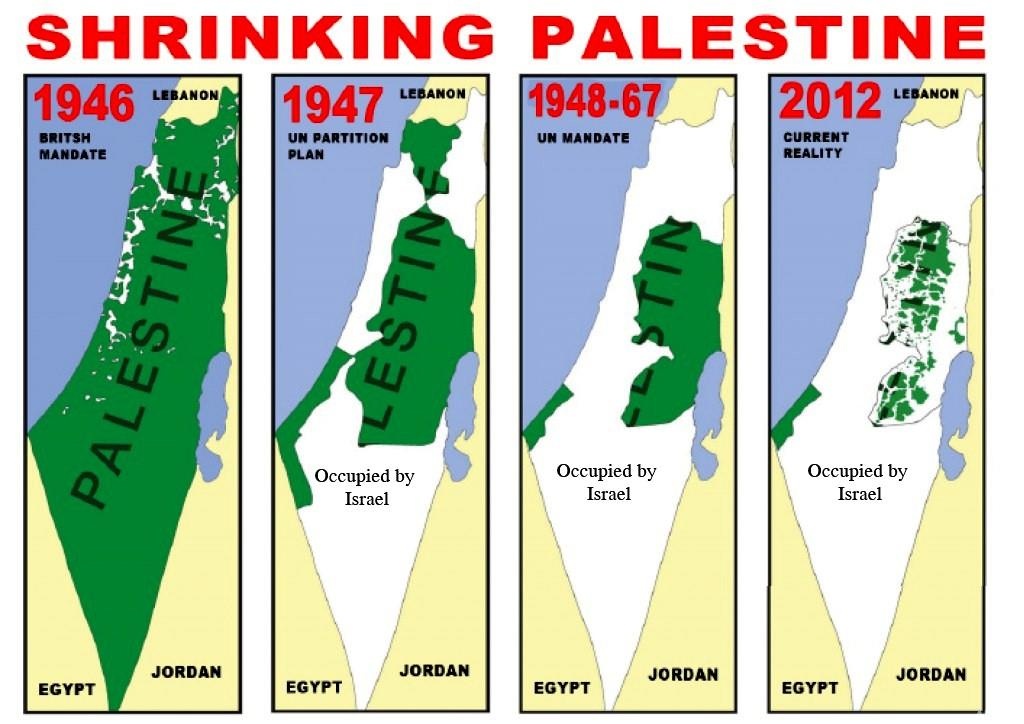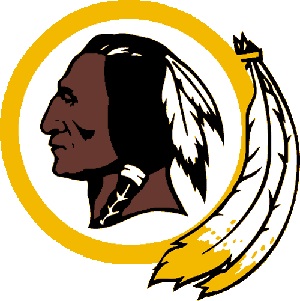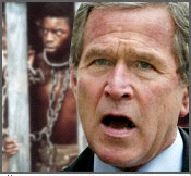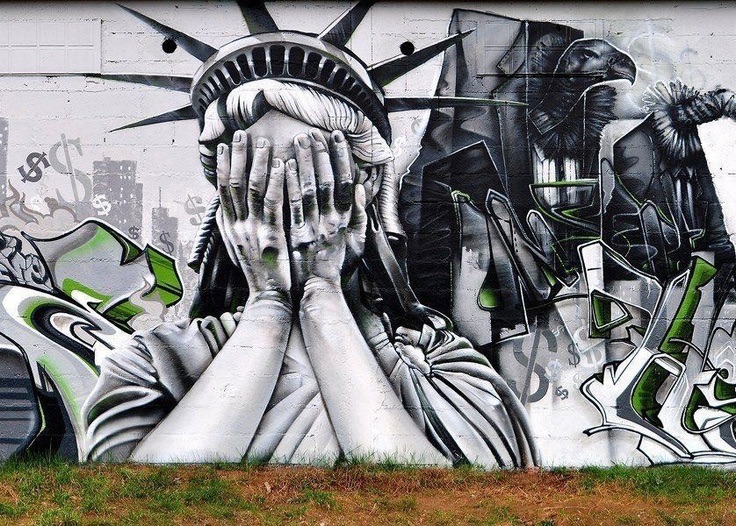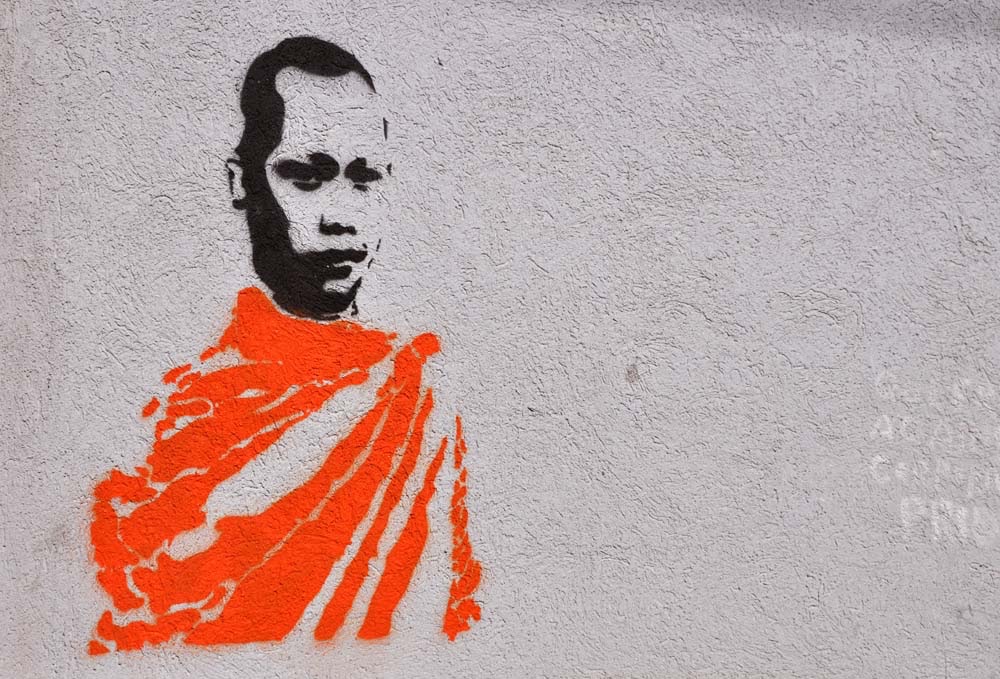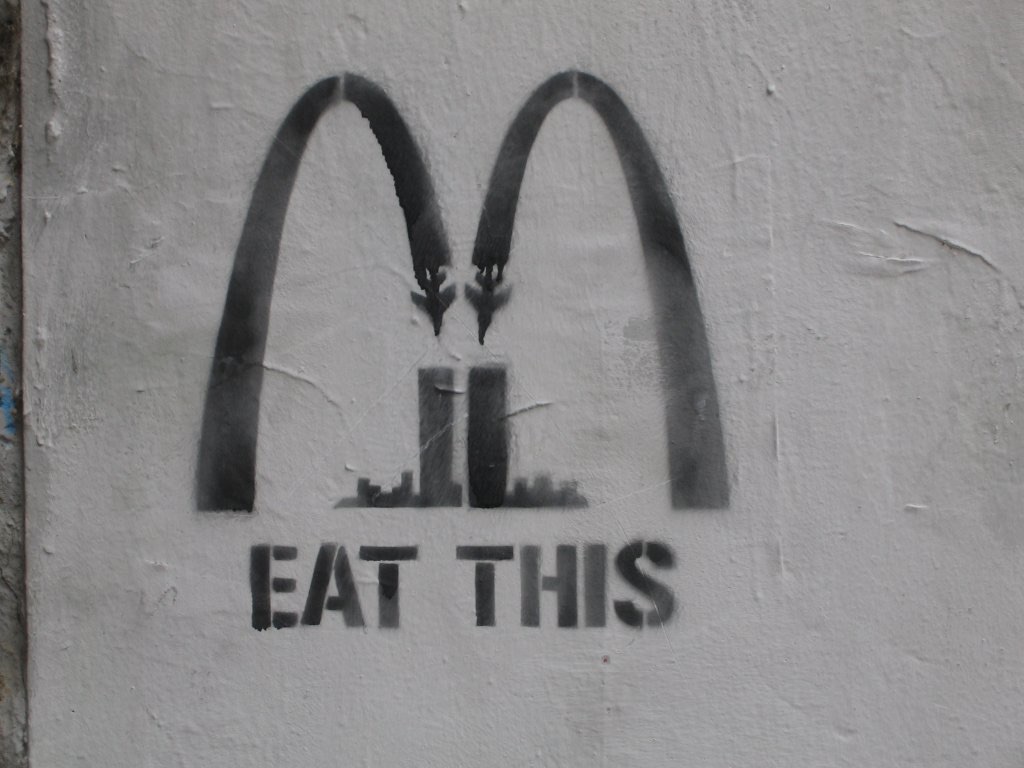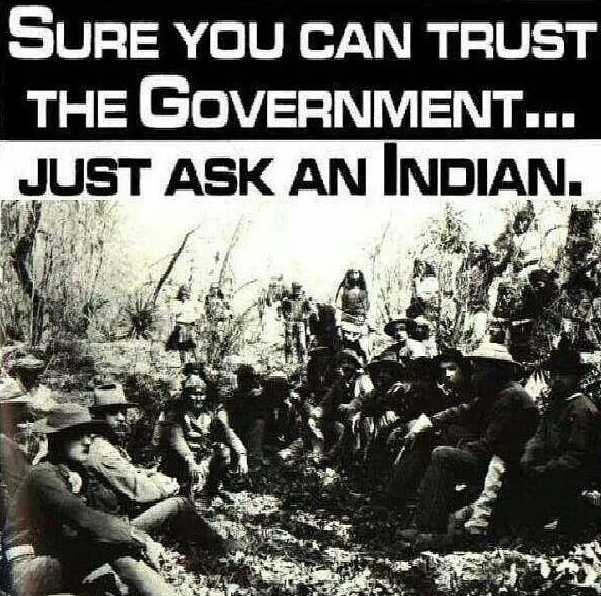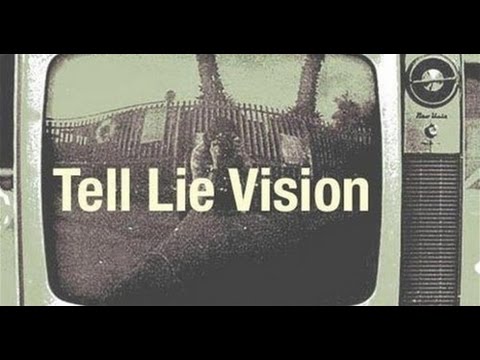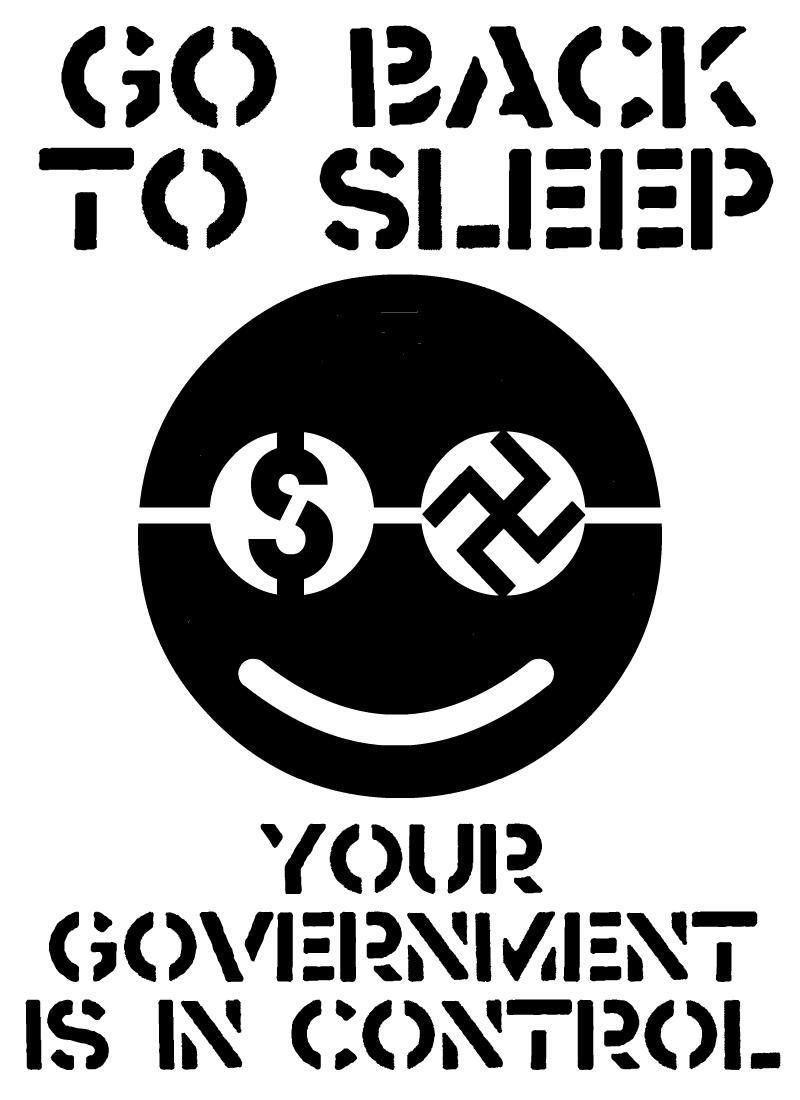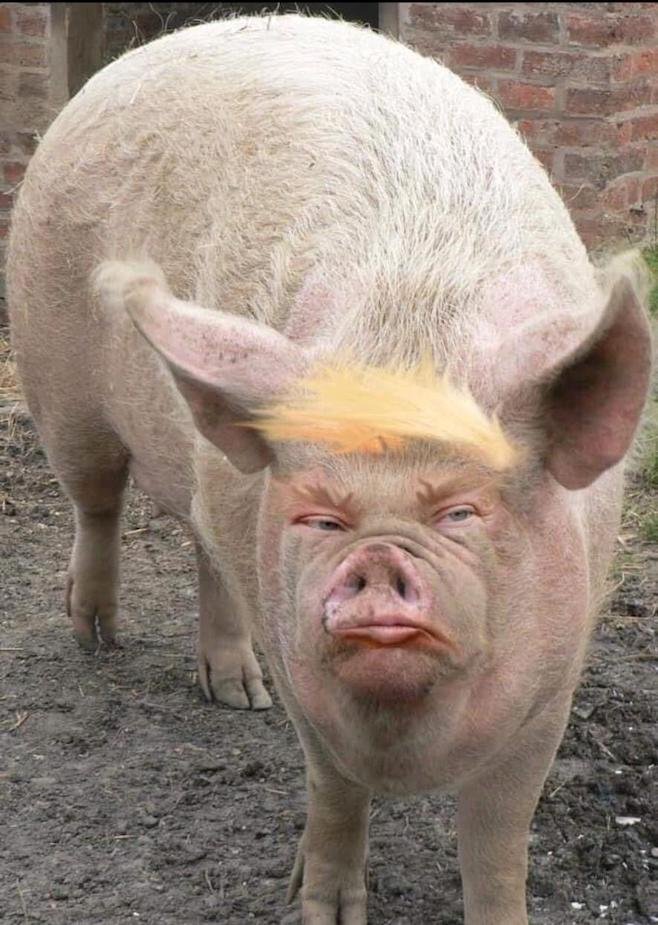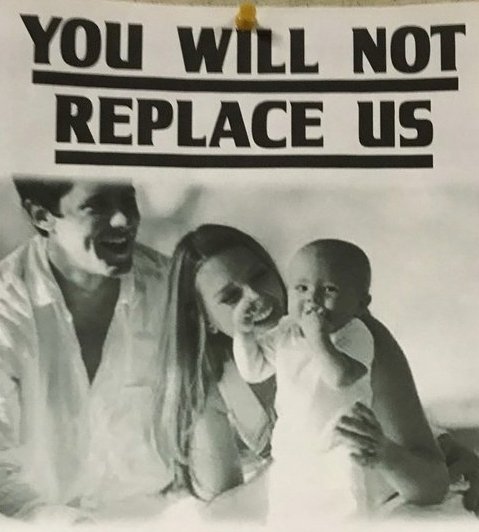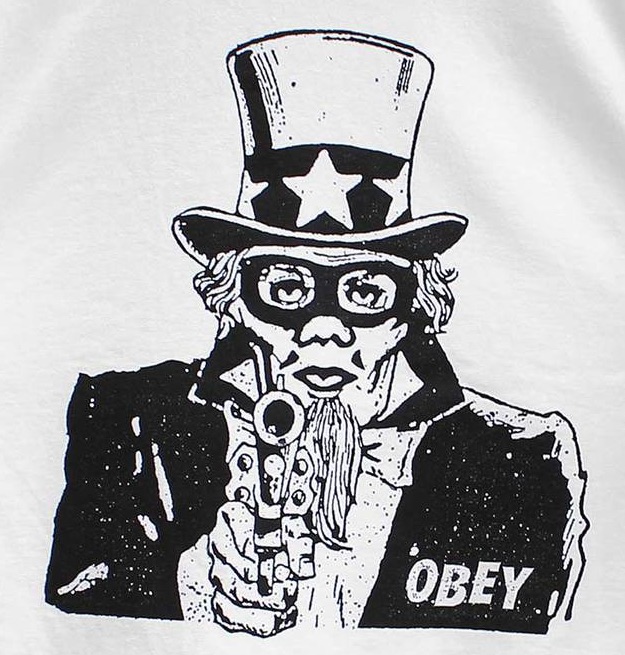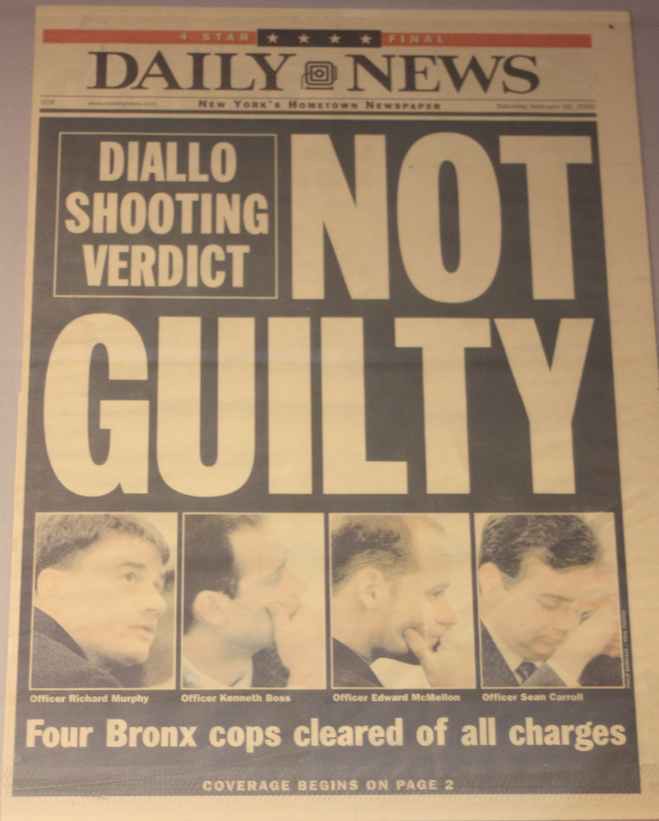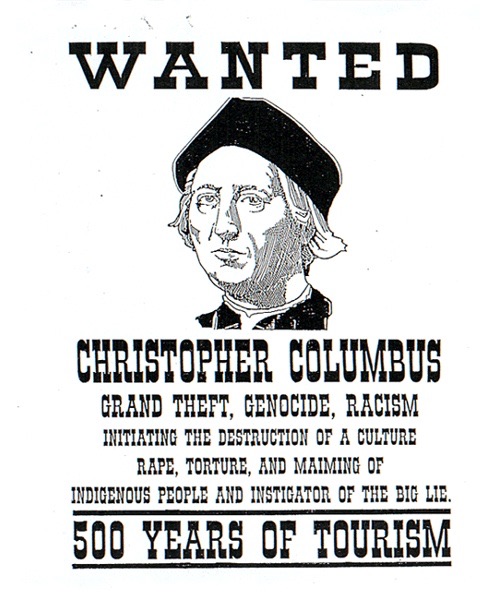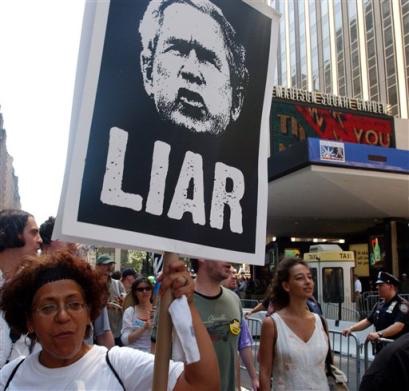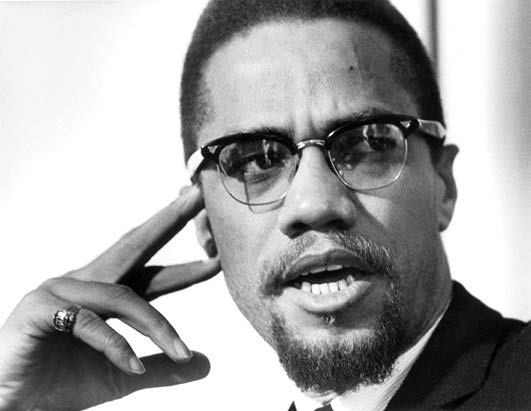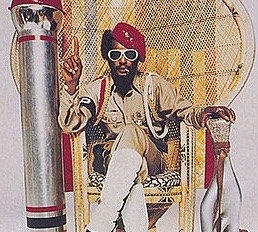From Slavery to Contemporary Genocide: A Literary and Linguistic Analysis of Why American Blacks Deserve Reparations
/From Southern University at New Orleans. Race, Gender & Class 2011. Pg. 73 Vol. 18 No. 1/2
By: Regina Jennings. Author of Malcolm X and the Poetics of Haki Madhubuti. Regina Jennings, Ph.D., has taught African-American Literature and Resistance and African-American Creative Writing at several colleges and universities including Temple and Rutgers. A widely published scholar, her articles include: "The Solar Imagery in the Poetry of Phillis Wheatley," "Maleness in the Fiction of Toni Morrison: Motherless, Fatherless Men," "Poetry of the Black Panthers: Metaphors of Militancy." Race, Rage and Roses is her recent poetry book and Poetry of the Black Panther Party and the Post Hip Hop Generation is her academic manuscript in progress. Dr. Jennings can be reach at power2people@gmx.com
There are millions of reasons why African-Americans deserve reparations. In this article, I intend to present a literary and linguistic investigation to buttress my belief that reparations are long overdue. In tracing the autobiographies and fictional reenactments of Black thought, behavior, and action, one finds a surplus of information that demonstrates the psychological dysfunctions, confusions, sub-humanity, brutality, and terror that occurred when remaking humans into beasts. This debasing process is the systemic procedure enslavers engaged in to turn Africans: Mandingo, Ibo, Fulani and others into negroes, complete with the lowercased "n." Before approaching the literature, however, I want to point out the horrible and genocidal contemporary results of monolithic, collective racism that began in the defilement of Africans, enslaved in America.
We begin with the police. The contemporary police own a long history that originates in enslavement of the African. The first policemen were not referred to by that name. The mostly young White males who nightly guarded the roads on the look out for escaping Blacks were called patrollers, which the enslaved coined into patterollers (Hadden, 2001; Williams, 1987). Normally racists, the patterollers believed in and upheld the institution of slavery. Like most Americans during this epoch, they figured that Divine Providence had made Africans a lesser group. In fact, the Blacks were akin to animals, literally in this psychology of White supremacy. Over time, when the legal humiliation and physical abuse of the African overturned because of abolitionism, escapes, a quiet and loud war (untold rebellions and civil war, respectively), slavery was abolished. Yet, the mindset that allowed and encouraged this peculiar enterprise to roll on for centuries never dissipated or disappeared. Hence, segregation, media mockery, lynching, (now police killings) restricted employment, unfair wages, and other outrages proliferated throughout Black America.
With the patterollers evolving into the police, carrying the baggage of racial disparity, the brutality against Black people continued in the forever police murders and tormenting abuse of mostly young Black men. A few contemporary examples (PStories, 2001) follow:
On February 16, 2010, in Portland, Oregon, Aaron Campbell, twenty-five years old, was shot in the back and killed by an officer with a rifle;
On November 11, 2010 in Oakland, CA, Derrick Jones, a thirty-seven year old barbershop owner was shot and killed by the police;
December 14, 2010, Guy Jarreau Jr., thirty-three years old, a community activist, student and mentor was shot and killed by a Vallejo, CA police officer;
On New Year's Day 2009, Oscar Grant, twenty-two years old, a young father and peacemaker in Oakland, CA was shot in the back and killed by the police; Fully complying with the officers, the unarmed man had begged not to be shot, but they killed him anyway; Riots erupted throughout Oakland, CA when the cops were found not guilty;
December 31, 2009, the police confronted Robbie Tolan, twenty-three years old, in his own Bellaire, California driveway. This promising athlete and son of baseball veteran Bobby Tolan was gunned down in front of his mother; With a bullet still lodged in his liver, his recovery has been slow and arduous; Along with ongoing nightmares, his life is now in tatters;
December 31, 2009, an undercover cop shot fourteen times and killed Adolph Grimes, twenty-two years old. A transplant from Hurricane Katrina, Grimes had driven five hours to Houston to celebrate the New Year with his family; while watching the news his loved ones discovered his murder;
April, 2009, Bernard Monroe, seventy-three years old, loving husband, father, and grandfather was repeatedly shot by the Louisiana police, who killed him (Oregonlive, 2009);
On December 8, 2008, Billy Joe Johnson, seventeen years old, was shot and killed by the police at a traffic stop on the border of Mississippi and Alabama (Police Shoot, 2008);
In Chicago in August, 2007, Aaron Harrison, eighteen years old, was killed by the police;
Raymond C. Chandler in Norfolk, VA, in July 2000 was pepper-sprayed, pinned to the ground and killed by the police and Chandler was a security guard;
The police killed Sean Bell, twenty-two years old, on November 25, 2006 on the eve of his wedding day and then targeted other members of the stag party: Joseph Guzman, thirty one, shot eleven times and Trent Benefield, twenty three, shot three times;
Between 1980 and 2005 close to 9,600 people were killed by American police (Sonoma County, 2008). From 1995-2001 Cincinnati, Ohio topped the list of Blacks killed by police (Common Dreams, 2001). In 1999, the police neglected to kill Abner Louima, they tortured him instead. How? Rectal sodomy with a broomstick. Again in New York, Amadou Diallo was shot so many times that Bruce Springsteen recorded a song entitled "Forty-One shots." Amadou Diallo, a gentle young man never had a chance, dying amidst a hail of bullets. During this same time period, so-called White friends of two Black men in Virginia and in Texas displayed this killer mindset. White friends acted out a contemporary throwback to lynching terrorizing and killing Garnet P. Johnson and James Byrd Jr. At a back yard party in Virginia, Garnet P. Johnson was decapitated and destroyed and James Byrd was dismembered when his friends tied him to the back of a truck and pulled off, tearing apart his body.
Similarly torn apart, Black women have also been victims of police mayhem.
In 2009, Brenda Williams, fifty-two years old and mentally ill was shot multiple times in the chest and abdomen and killed by four Scranton, PA police;
On August 22, 2006, the police assaulted twelve year old Dymond Millburn in her own backyard; Police from an unmarked car surrounded and beat this child who screamed for her parents; Coming to her rescue, her parents were police whipped as well; later, officers arrested the twelve year old girl at her middle school, charging the child with resisting arrest;
On November 21, 2006, Kathryn Johnston, ninety two, died when cops with a no knock warrant shot her six times; Johnston was 92 years old-ninety two!
Two Memphis police in 2008 beat Duana Johnson to death; the beating was described as assassination style.
On June 4, 1999, the Chicago police confused Latanya Haggerty's cell phone for a gun, and they shot and killed her;
Caroline Sue Botticker died of twenty-two shots from West Charlotte North Carolina cops, in 1997;
That same year, Sandra Antor, twenty-six years old, was dragged from her car at gunpoint and beaten by police;
Tyisha Shenee Miller, nineteen years old, was shot twenty-seven times in Riverside, CA in 1998; she was killed by the police;
In 2003, Alberta Spruill, fifty-seven years old, died of a heart attack when the New York police broke through her apartment door setting off grenades (Racialicious, 2009). In the early morning hours, they handcuffed the frightened woman to her bed, wrongly tagging her as a drug dealer. Alberta Spruill was a well loved, hardworking, church going woman whose funeral attracted over a thousand people.
I personally know men in wheelchairs because of police bullets. As I write this article, my plumber a meticulously skilled married man, father and grandfather was ordered out of his truck which clearly identifies his services. At gun point, the police forced him to the ground. Calling him "nigger" repeatedly demanding his identification, he spoke calmly telling the officers to take his wallet from his pocket. My plumber was unable to hand the cops his wallet because they had forced him to the ground, face down, and handcuffed him behind his back. In this demeaning position, nose smashed in the dirt, my plumber could only listen as the cops examined his papers. Annoyed that he was not a criminal, they shot him anyway. Although he is suing the city of Philadelphia, nothing can erase that physical and psychological alarm or restore his ruptured bodily functions.
The 1997 book, Stolen Lives: Killed by Law Enforcement documents at least 2000 people of color slain by the police. Black men and women are so routinely executed, beaten, and tortured by the law that too often the public thinks this behavior is normal. This normalization in large part concerns the psychological premise, motive, and regularity of brutality against people of African descent that never left the American saga, beginning with the African's expendability, commodity and object status. For instance, during the 20th century, Black men were lynched and huge crowds gleefully and treacherously gathered, later bragging about individual complicity in the awfulness. Killing a "nigger" was (and is) an American standard with police officers, klan members, and regular citizens condoning and joining in the torment and executions. Many of us recall the King years where fire hoses, murders of freedom riders and leaders painted the American landscape. Many of us remember how it took armies to desegregate southern strongholds of heinous racism. How does one put a price tag on the humiliation and fear that the above Civil Rights workers and prior to them the Greensboro four endured to desegregate a Woolworth's lunch counter? Monetary recompense in the trillions cannot satisfy the crimes against humanity that Whites have committed against Blacks.
My main contention is that the police carry the memories and programmed racism informing their origination. Additionally, more broadly, White America has sadistically and legally persecuted the African transformed into the negro for centuries. This is why reparations are long overdue and such remuneration can never fully remediate the human rights violations of those of African descent. Reparations are at least a start.
FOR MORE EVIDENCE: A LINGUISTIC AND LITERARY STEP BACK INTO HISTORY
It started with the capture of the African and then the renaming. During the 15th century, when Portuguese explorers seized African lands and enslaved the people, they simultaneously (re)named the indigenous groups. Disregarding what the people called themselves, the Portuguese explorers (re)named the unfortunate using derogatory terminology that transformed a diverse set of human beings into a collective symbol of slavery. Since the practice of (re)naming linguistically and psychologically stripped land and point of origin from the various ethnic groups on the western tip of the continent, a once identifiably multi-cultural set of inhabitants became a New World commodity, degraded and dehumanized. This New World creation turned into the "Negro" debated and legislated outside of humanity (Jennings, 2003).
During that same 15 century ep th och, prior to the enslavement of West Africans, the word "negro" in Portuguese and Spanish refers to "black," a color description. However, once the explorers expanded the enslaving process, the terms "negro" and "black" altered in semantics, changing from a color to a category that means "slave" (Moore, 1992). This divergence in literature and popular culture left "Negro" no longer an adjective but a noun, absorbing all of the brutality of bondage. During the epoch of the transatlantic slave trade, added meanings filled out the debasing term with the following synonyms and descriptors: stupid, coward, heathen, ugly, lascivious, savage, evil and other negative references. With the spread of slavery, additional Europeans besides the Portuguese then sailed into Africa, mentally carrying the subtle and agreed upon dimensions of African inferiority. In fact, the word "Negro" as a linguistic symbol not only transformed the New World African into a commodity, but also influenced the depths of disgrace that Whites projected onto all of African descent.
When Shakespeare created his masterpiece Othello, for example, the protagonist's internal figurations and characterization reveal degenerative qualities of the African transformed into "Negro." Othello is not only about an interracial tragedy but also the racial beliefs during the Elizabethan period. As Winthrop Jordan (1997) explains in White over Black, "Shakespeare was writing both about and to his countrymen's feelings concerning physical distinctions between kinds of people; the play is shot through with the language of blackness and sex (p. 37). The Moor is "lusty" and the Moor himself considers his own complexion "begrime'd and black." Othello has assimilated a European version of the African and this acceptance intensifies in Iago's commentary on the newlyweds. Iago describes sexual intercourse between Othello and Desdemona as bestial. In fact, Jordan conflates the psychology and common beliefs that give meaning to the language. He states: "This was not merely the language of (as we say) a 'dirty' mind: It was the integrated imagery of blackness and whiteness, of Africa, of the sexuality of beasts and the bestiality of sex" (p. 38). Eurocentric interpretations of African people cast the collective group as the inverse of Whiteness (Gates, 1987). Exploiting distinctions in physical appearance, social practices, and spirituality, English and White American authors crafted the Negroes into animals.
Documented in the New World and England, bestiality tales about the n/Negro flourished. For instance, the English belief that Africans had sexual liaisons with apes traveled in the imaginative pornography of the colonists who assumed as truth the lustiness and so-called large genitalia of Black women (Jordan, 1977). This largeness was thought to result from copulation between African females and orangutans. In fact, a premiere 18th century intellectual and statesman, Thomas Jefferson, puts forward this line of thinking in his essay on emancipation in Notes on the State of Virginia. Jefferson writes about the Blacks he observed, owned, and examined physically and psychologically:
The first difference which strikes us is that of color. Whether the black of the negro resides in the reticular membrane between the skin and scarfskin, or in the scarf-skin itself; whether it proceeds from the color of the blood, the color of the bile, or from that of some other secretion, the difference is fixed in nature, and is as real as if its seat and cause were better known to us. And is this difference of no importance? Is it not the foundation of a greater or less share of beauty in the two races? Are not the fine mixtures of red and white, the expressions of every passion by greater or less share of beauty in the two races? Are not the fine mixtures of color and the one, preferable to that eternal monotony, which reigns in the countenances that immovable veil of black which covers the emotions of the other race? Add to these, flowing hair, a more elegant symmetry of form, their own judgement and favor of the whites, declared by their preference of them, as uniformly as is the preference of the Oranootan for the black woman over those of his own species. (Butcher, 1977:142, my emphasis)
According to Jefferson, orangutans prefer mating with Black women and his casual tone suggests this preposterous fantasy is commonly accepted fact. Early in the excerpt Jefferson finds fault with pigmentation: to him, having color is a liability and it isolates those so afflicted into a classification of harmful difference. Jefferson's superiority over the African, now negro is obvious. His notion of self and race beauty overflows with arrogance and disdain for the unfortunate who were not divinely born White. The juxtaposition of "uniformly" between his ideal of supremacy in aesthetics and the horrible rumor but accepted belief of the perverted Black woman demonstrates the branch of racism where the other is expendable and depraved. In fact, in Jefferson's perspective, the other prefers the company of his oppressors over his own kind. This other, in Jefferson's imagination is a selfhating, ugly, lascivious pervert. Yet, something is perplexing in the statesman's comments. When one considers how many biracial children he fathered and rejected, his remarks about the bipolar tendencies of the negro turn back on him. According to his perspective, he is similar to the "Oranootan," because Jefferson also desired the intimacy or in his situation, the molestation and rape of young Black females.
Black men and women authors of the 18th and 19th century produced literature that contains phrases which reveal uncertainty in determining if they thought themselves completely human. This instability arises from the nature of being owned as chattel by another human group who restated the world exclusively in frames of White supremacy. In this global White reformation, the transformed African into the negro evolved an inner world of defeat and sub or nonhuman status. Such entangled subjugated realms occupy early American Black literature, where, for example, the term "guinea" appears, suggesting its regular usage in England and America. Authors, Olaudah Equiano and Frances Harper in differing contexts, employ this puzzling word, "guinea." Beginning with Equiano (1789) in Equiano's Travels, he uses it to represent legal currency. However, considering that Guinea is the African area of Olaudah Equiano's birth suggests a paradox in his acceptance of his personal geography as one representing European capital. In his autobiography, his usage exposes his adjustment to and acceptance of language that (re)formed not only his personal topography, but also him(self) outside of the human family. The currency transformation of his birthplace shows up in four different textual situations (see Edwards, 1977). In the first illustration, he writes, "I had about nine guineas which during my long seafaring life, I had scraped together" (p. 59). In the second, he writes, "A sailor on board took a guinea from me on pretence of getting me a boat" (p. 60). And then he says, "I had thirty-seven guineas which would support me for a time" (p. 122). And lastly, "My captain once said he could get more than one hundred guineas for me in Carolina" (p. 87). In this sampling, Equiano converts himself (a man from Guinea) into money. He is a Guinea trading with guineas, intellectually merging himself into currency. The ordinary tone of each excerpt implies his equivalent acceptance, acknowledgment, and schizophrenic conviction in his existing as thing, commodity, and asset.
Such cerebral instability had a history of its own, developed long before Equiano's birth. The 17th century "Guinea Company" specializing in enslaving procedures is a case in point. With this company thriving a century before Equiano's birth suggests the author was born into a legacy that projected his lineage as monetary fortunes for foreigners (Jordan, 1977). Big businesses developed around this transformation of the African into a thing, strongly insinuating in the English language that Africa was a topology of capital equaling money, not people. Although Frances Ellen Watkins Harper (1892/1988), in Iola Leroy uses the term g/Guinea differently, for each reference, currency is still the main idea. Her character, an enslaved man, called Uncle Daniel narrates a story about a defiant "Guinea man."
We used to hab on our place a real Guinea man, an' once he made ole Marse mad, an' he had him whipped. Ol Marse was trying to break him in, but dat fellow was spunk to de backbone, an' when he 'gin talking' to him 'bout savin' his soul an' gittin' to hebbin, he tole him ef he went to hebbin an' foun' he war dare, he wouldn't go in. (p. 22, my emphasis)
Harper's resisting "Guinea man" is provided more respect than American born negroes, evident in the capitalization of "Guinea." Throughout Iola Leroy, the author does not uppercase the "n" in n/Negro, and Harper is a free Black American woman. By her lower-casing the "n" of her ethnic group, she demonstrates not only (involuntary or voluntary) acceptance of inferiority, but also the literary standards of the 19th century. In other words, the belittling of this race of people was ordinary in American society and perspective.
Going in another direction, in further contemplating Uncle Daniel's telling we discover his quiet admiration for the one refusing to follow not only the Bible but also the process of being broken. One breaks in a wild stallion; this gentleman's refusal to be broken rebuts what the entire society urged: his agreeing to animal definition. The above scenario is significant because the Bible passages that upheld slavery and the might and absolutism of the master and mistress oiled the wheels of the peculiar institution. The Guinea man, therefore, was rebelling against the overall entrenched system of societal, familial, religious, and cultural racism.
The humanism of the author Frances Harper and the character Uncle Daniel emerges in how they view resistance to oppression: they thrill witnessing one who fights back providing each with inspirational "spunk." However, even though the real Guinea man is a fighter, his defiance is contained within the setting of White ownership. Uncle Daniel and the Guinea man are property. Their owner could beat, molest, sell, and misuse each at will or whim. In short, even though the "Guinea man" talked tough to his master (which took great courage) he is still an object: forced to merge his body and soul into money, manhood, and probably moments of madness.
In Equiano's Travels, Equiano displays that merge again when he cites a slave ship, as a Guinea ship. The Guinea ship en route to enslaving topologies anchored in the West Indies (another (re)named island) in order to "season" the Guineas readying the unfortunate for American slavery. To season or seasoning is an element of the Middle Passage journey from Africa to the Americas which involved the following: Before Africans were sailed to the New World, the traffickers stopped off in the islands to prepare the human cargo for future bondage. Because the enslavers recognized that a complete and confident human being will not yield to belittling, they decided that an overwhelming force of fear would diminish self-worth. In order to accomplish this goal, the enslavers, once on the islands, selected a few Africans for whipping, killing or both. This procedural cruelty terrified and traumatized the onlookers. Those witnesses to such crimes against humanity psychologically expanded the chaos already viscerally alighted in tripartite (public, personal, and collective) torment. The results indeed shaped an unspeakable, ingrained, filmy defeat and dread which welcomed each person from Africa into America.
Such acts of witnessed terrorism assisted the transformation of a human into a slave, reducing the Fulani, Ibo, Mandingo and other Africans into something small, lesser than, "minor(ity)," negro.
THE AFRICAN AS CURRENCY
The mental entanglement of the Americanized African into currency is evidenced in another phrase lifted from early African-American literature. This saying amplifies the process of buying, selling, production, and capital that besieged and negatively influenced the ontology of the Americanized African. The expression is "put in the master's pocket." To be "put in the master's pocket" is to be sold by the master who receives the money. For the enslaved to participate, "voluntarily or involuntarily" (allowing space for the rebellious fighters who knowingly spoke language against their own interest but had no choice), in this conceptual activity forthrightly states the acceptance of the self as article of trade or object. This idiom, in the same text where Harper relishes the "Guinea man," in this first circumstance explains parental opposition among the master class concerning people of African descent. Alfred Lorraine, a slaveholder, says: "[my father] was very squeamish about selling his servants but [my mother] would have put every one of them in her pocket before permitting them to eat her out of house and home" (Harper, 1988:64, my emphasis). Here we view the output of maintaining those enslaved as well as the choice that enslavers had if deciding whether or not a better business venture would be to keep or sell the family chattel.
With the enslaved people designated as unpaid servants, workers, laborers, craftsmen and women, sexual outlets, whipping boys and girls and assets, in Incidents in the Life of a Slave Girl by Harriet Jacobs (1861), we find "put in the pocket" again. When describing the selling of two enslaved people, a married couple, Jacobs says: "The guilty man put their value into his pocket, and had the satisfaction of knowing that they were out of sight and hearing" (p. 13, my emphasis). The system of slavery endowed the master and mistress a God-like power. Fading away chattel was a choice for enslavers. At any time, for any reason, they could alter the geography of any chattel, selling human beings away from family members and friends. Either for personal gain or investment, the master class, regularly engaged in this avenue of exchange.
The author Harriet Jacobs was so accustomed to this vastly unequal and unhealthy power maintained by Whites that she selected the exact terminology, "put in the master's pocket" when describing her own plight: She writes: "it was very natural that he should make an effort to put me into his pocket" (p. 197, my emphasis). Further contemplate the word "natural." Unquestionably, Jacobs and the others acknowledge, accept, and reveal the normalization of the transformation of themselves from human to currency and product denoting an indescribable implication of powerlessness, helplessness, along with smallness, imaginative and non-human.
Obviously a psychosomatic defeat for the negro, but for the enslaver, the phrase indicates beneficial endings. Putting the negro(es) into his pocket, the enslaver gains financial security, despite the ruptured uncertainty and removal of his chattel. However, it is no less than amazing that those in bondage living under this kind of depleting insecurity twisted this conceptual statement, into something personally useful. Examine how Prince Johnson, an enslaved man, explains, reverses, and combines a unique variation on this same expression, saying that:
The rule was if a nigger wouldn't work, he would be sold. Another rule on that place that if a man got dissatisfied, he was to go to Old Master and ask him to put him in his pocket. That meant he wanted to be sold and the money be brought to be put in the [master's] pocket. I ain't never known of but two asking to be put in the master's pocket. And both of them was put in. (Mellon, 1988:239, my emphasis)
With both men being "put in," Prince Johnson's excerpt demonstrates two significant beneficial behaviors to "niggers." #1: enslaved folk took the language and reversed it in order to challenge the master and mistress, showing irony and intelligence and #2: this language reversal is a form of resistance to enslavement. However,like the Guinea man's quagmire, the reality of ownership is hidden in the defiance. When the men above were "put in the master's pocket," they countenanced a new realm of removal, and what happened there? They may have changed masters, in the different space of slavery, but they were forced to carry on free labor; complicatedly they won yet lengthened the loss with a venue shift.
Hence, even though they tasted the delicious satisfaction of defying White male ownership (and superiority), the entrenched, daily system of slavery prevented full expression, ingenuity, individuality, and freedom. They were still owned, in a malleable position for hurt, humiliation, torture, abuse, or murder. Literally and figuratively, to be "put in the master's pocket" was a tragic sleight of hand causing the disappearance of an African already reduced to negro, nothing, commodity, expendable property. This saying highlights the monumental effect of chattel slavery on linguistics, language, literature, culture, and the American imagination.
Let us review here. I began this article stating that Blacks deserve reparations for millions of reasons. The collective million(s) stands for every enslaved African and their descendants suffering through segregation. I will now provide nine tangibles that contribute to my belief about Blacks obtaining reparations. #1: Black people deserve reparations because of the free labor provided to Whites for centuries; #2: The psychological devastation that centuries of ownership by Whites instilled in the biology of African-Americans; #3: After being beat down for centuries providing free labor and free access to all that the transformed Africans owned, White America created segregation; #4: Segregation continued for more than another century, and it included restricted growth and opportunities, legally, for the n/Negro; #5: Not only was segregation physically insulting, inconvenient, and eroded empowerment, but also it further demeaned the psychological well being of the n/Negro; #6: African-Americans deserve reparations because of the named and unnamed Blacks who were cheated out of property, money, and assets; #7: Black people deserve reparations for those lynched, castrated, and incinerated alive by Whites; #8: Black people deserve reparations for the forever police murders and maiming of said people which resonates collective psychological terror intra-racially; #9: African descendants deserve reparations because of Black on Black homicide involving mostly young Black men (returned to below).
CONTEMPORARY AMERICA
The country of America as explored and conquered by Whites has brutal origins. For example, young White America is explicitly linked to the slaughter of the original Red people who assisted the Europeans when they arrived in this part of the world. Not only did the Whites slaughter the Red people, because of superior weapons, they also stole this land which the indigenous had held for millennia. Then Europeans sailed to Africa for free labor, to perform every duty that enabled this country to develop and prosper. In short, White people have a historical legacy of bigotry, constant killing, theft, betrayal, and multiple abuses of people of color. Included in this history is their want to exclude people of color from the human family, and to accomplish this penchant, the empowered and brilliant Whites developed a culture predicated on the sub-humanity of the African (and the Native American). This cultural poison has hampered the American African; however, some have manipulated themselves into positions of winning. Yet the integral and integrated racism continues.
Of particular kind, no one ever dreamed that an African descendant would rule this country; Africans had been renamed negro, which was enough to kill off a people's potential; however, the negroes fought for the capitalization of the "n" to "N." Marcus Garvey (1887-1940) and others won that battle, and the transformation upward flowed into the 1960s where a "bold young captain" Malcolm X (1925-1965) preached to the capitalized "N" Negroes to drop that race name completely, explaining in caustic language that Negroes were African- Americans; in the late 1980s Jesse Jackson shook open Malcolm's previous insistence and African-American replaced Negro, forever. Still, (mostly) no one ever dreamed that an African-American would rule this country, but Barack Obama won the 2008 election. Overturning core American beliefs, his ascension earthquaked a part of America, elected officials and laity, resurrecting familiar, historical, racist, hysterical behavior showing attitudes from slavery are well in tow.
Such as, the tea party and the republicans question the president's citizenship. Even though Barack Obama's birth certificate has been on the internet, such mostly White groups claim he is foreign born. This untruth in the context of my argument highlights the historical racism that isolated the foreign born African as the objects to enslave. This constant questioning also spotlights how some Whites desire to undermine the rule of a Black man, for no other reason, except that he is not totally divinely born White. For the "birthers," Obama's presidency is illegitimate because he is a child of Kenya which means he lacks the rights and privileges of White America. Imagine that.
At rallies organized by tea party people, some signs include the following slogans: "Obama's [Healthcare] Plan is White Slavery." Very interesting twist that brings up the guilt and misplaced fear that Whites bury for they know the generational complicity in the human rights abuses against the negro. Well aware of their ancestral cruelty, they secretly hope the African-American president holds no animosity towards Whites. Another slogan: "The American Tax Payers are the Jews for Obama's Ovens." Now, President Obama is Hitler. Obama has ovens for "The American." Who are the Americans? If you consult an early 20th century dictionary it will list Whites as Americans, no one else. This foolishly malicious rendition of Obama demonstrates again White guilt and biased, bizarre hyperbole. These Whites are projecting evil onto the first Black president as mild-mannered as General Colin Powell. Another slogan: "Our Tax $ Given to Hamas to Kill: Christians, Jews, and Americans." This veiled (foreign) religious reference associates the president with suicide bombers and Islam. The tea partiers already project anti-Islamic sentiments and to connect the president in this line of thinking is one more way to isolate the commander-in-chief from American Whites. "Obama What you Talkin' About Willis!" But of course, the new African- American President is likened to a Black dwarf largely comedic though in real life quite tragic. In the collective consciousness of White supremacy, President Obama is the thing, the nigger, the nightmare with power. President Obama cannot be put in the master's pocket and this freedom violently shakes the already distorted psychology of some American Whites.
Other displayed signs include a Barack figure resembling Hitler and another is a sinister, look-alike caricature of the President slitting the throat of Uncle Sam (Huffington Post, 2009a). The designers of the latter probably recall Nat Turner. All in all, this artistic collection is putrid White guilt, excitement, shock, hatred, viciousness, and bigotry because of the sins of slavery. These emotions and more culminate hugely when racists see a Black man (what? A nigger, coon, negro, witch doctor) now leading the most dominant country on Earth. Embedded in the nature of America, this extremism shows itself in industry built before the Civil/Human Rights Movement that ridicules and harms the negro.
Racist industry, based on the mockery of the negro, proliferated throughout the country between the Emancipation Proclamation, 1863 and the 1960s. "The Coon Chicken Inn" represents a model of exactly what I mean. Not only was it offensively titled, but also derogatorily constructed. An overly dyed black face with huge red lips and wide eyes arch the front doorway. White families laughingly entered the gaping mouth of this bizarrely offensive property that showcased White privilege and superiority. Inside, like the doorway, the eating utensils and menus highlight that same awful caricature. Take a brief journey with me and imagine how much mockery, venom, and human isolation the customers in "The Coon Chicken Inn" imbibed at the expense of the negro. Review if you will their jocularity and fun in the ridicule of the once African, and lastly think of the sentiment of White privilege that the imbibers assumed, maintained, and expanded within and outside this racist restaurant. Then imagine what the Blacks or lowercased "n" Negroes thought of themselves as they walked or drove by such establishments. Particularly think of the children.
In America, objects for children also ridiculed and defiled the negro. The "Jolly Nigger Bank" is an illustration. Those exact words are printed on the body and again the thing is dyed obscenely and deeply black with huge red lips. I purposely selected this item because it targets children. "Jolly Nigger" has a hand that accepts the money and when you push up the hand his eyes race back into his head as the coin disappears inside the mouth. In this sordid market, racism, mockery, human isolation of the negro imprint early in the American child's mind and imagination. When saving money in "Jolly Nigger Bank" the youngsters are subtly reminded that "Jolly Nigger" is an asset: a vessel for coins, money. This "nigger" has no blood, unlike the White child: he is investment capital. "Jolly Nigger" is distorted with one arm and he enticed ill-taught White onlookers to make merry and money again at the expense of Black humanity. An integral part of American culture, "Jolly Nigger Bank" and a host of other racist items for everyday living stimulated daily the negroes' inherent inferiority and sub humanity as it persuaded Whites to surge in pre-eminence and advantage.
Hence, how can a collective climb down from this ladder of thought and accept a Black man in the oval office. Despite the 1960s movement for civil and human rights, some Whites dismissed that whirlwind of change, refusing a paradigmatic shift in the new Negro now African-American. This is why President, Barack Obama receives such racist and historically regular depictions. Here's more: President Obama is depicted as a monkey in the New York Post, and GOP activist Rusty DePass likened his wife the First Lady to an escaped gorilla (Huffington Post, 2009b; New York Daily, 2009). When Whites owned Blacks, it was commonplace to joke in print and in life about forced similarities between simians and African-Americans. Additionally, as late as the 1940s, the media compared so-called Black male criminals to gorillas documented in 1940's Native Son by the masterful writer Richard Wright (1908-1960). Even further, Google today has full size pictures of Michelle Obama in gorilla face. Despite the protests, Google refuses to take down the pictures. In line with this bias and historical continuity, President Obama has suffered indignities that no other in the presidency has ever endured, such as the insulting, demeaning, and shocking public shout out during his State of the Union Address to the joint houses at the 111th congress. On that September 9th evening in the year 2009, GOP representative Joe Wilson screamed out "You Lie," interrupting the president's speech. It was a fright to witness and it physically shook the cool Barack Obama. And that's not all: Senator Jim Demint, republican from South Carolina publicly stated "If we're able to stop Obama on [health care], it will be his Waterloo. It will break him."
Break him? Did he actually say "break him?" Where have we heard that before? Let's revisit the narrative about the Guinea man or return to Prince Johnson's remarks. Even better, please read the Narrative of the Life of Frederick Douglass: An American Slave: Written by Himself (Douglas, 1845).
The tea partying Whites who wear guns to rallies and carry signs that say "Take Back Our Country" metaphysically revisit or never left the "put in the pocket" days. Since they can't buy, sell, and molest Blacks (at least in public) anymore, they tote signs that shout "Take Back Our Country." Take back the country to what? Plus, to whom does the pronoun "our" refer? Is everyone included? Are the indigenous peoples included? The language on the signs and in our culture is a reminder of the systematic and attempted legal destruction of a people.
When we contemplate that Prince Johnson in the above quote refers to himself and his kind as "nigger," this entangled language destruction becomes quite obvious. Like n/Negro, this is not a word that emerged from continental Africans. Instead, the enslavers' demented psyche provided this word which debases more than "guinea" or "negro" further fracturing and removing the once African from the human family. A nigger is ugly, vile, and negatively extraordinary. A nigger compounds and compiles the worst in the human experience. An epithet it turned the lowly negro into something diabolical that should be handled as horribly as its (invented) nature.
I find evidence for this direction in the Oxford English Dictionary (OED) where "nigger" has another form-"niggar." Both are supposedly unrelated to "Niger," which precedes each in the OED, and then confusion reigns with "Niger" equaling Neger and Negro. Further along, the listing for "Nigger" equals Neger, Negro and niggar. Therefore, "nigger" is not unrelated to the African place name "Niger." Nor of course is it unrelated to Negro. This language juggling relates to the separation of Africa or Africans from the new group, negroes, enslaved in America.
Examine the following 18 century th religious use of "nigger": "1786 Burns, Ordination iv: How graceless Ham laugh at his Dad, Which made Canaan a nigger" (Oxford English, 1985). In the Christianity professed to Africans during slavery, in America, Ham, as the above directly claims, is a "nigger," and all of his progeny are "niggers." This religious doctrine fostered the argument in sacred language for the Africans' perpetual bondage. God disfavored Ham, the originator of the African according to the Bible. Imagine how the lowly enslaved experienced this understanding in the context of personal, physical oppression. Imagine how contemporary believers internally interpret being "black as sin" or being a "nigger." Early White American intellectuals put together "nigger" combinations that expose the term's entrenchment in American culture. Consider the following: niggerdriver, nigger-hair, nigger-jockeys, niggerdom (niggers collectively), niggerisms, nigger-fish, niggerlings, nigger-dogs.
Nigger-dogs were the patterrollers companions trained to hunt escaping enslaved people. Taught to rip the flesh from Blacks, this canine class underwent instruction that included starvation, restraining with ropes, and letting loose. The final step in nigger-dog training involved a human size figure resembling a negro, its abdomen stuffed with fresh meat. On completion of the nigger-dog preparation, the starved dogs were released near the meat-filled mannequin, and they attacked, devouring the Black figure's middle. Afterwards they were ready to hunt genuine dark people.
Nigger-dog training is not a spectacle that originated in America. Appearing first in 15 th century Europe, this animal brutality was known as "bearbaiting," a somewhat competition. Bear-baiting involved chaining a bear to a tree, leaving his or her feet unrestrained. Once fixed in place, the bear was at the mercy of merciless and starved dogs (Kirkpatrick, 1990).
Because in this transported worldview, animals and niggers are similarly treated, this ethos blunted the sensitivity of enslavers when inflicting ferociousness to "niggers." Consider lynching, public whipping, and incinerating people alive. The scholar Richard Moore (1992) writes that names become the things so named. Just as combining "nigger" with "dog" separated this particular canine from others, (re)naming the African "Negro" or "nigger" extended this people's isolation from other humans. Thus, the transformed African equated with animals was destructively distinguished based on caste, class, color, and physical features. In this segregation, mean-spirited Whites failed to view Blacks (negroes/niggers) as people similar to themselves. Further, more tragically, the Blacks (negroes/niggers) assumed more levels of inferiority, influencing their internal world simultaneously.
The following OED monologue exposes more distinctions based on color: "When I say colored, I mean one thing respectfully; and when I say 'niggerish' I mean another thing disgustedly." The consequent generation of American biracial people created another New World formation, "coloureds," often (but not always) considered superior to darker Blacks (Rodney, 1982). This stratification based on color psychologically expanded harm to Americanized Africans to the extent that to escape the pain and inner fission some laity and scholars today report that "nigger" is no longer restricted to African Americans. This object of "disgust" nigger is a shared term that refers to all, including Whites, they claim (Kennedy, 2002). Having taught White and Black students I know that contemporary Whites use the n-word for a host of reasons including identification with Black people. However, I also know the terrible, horrifying context for the origins and historical usage of "nigger." To claim that it refers to others or that additional groups can use it reflects a dishonesty that camouflages the original intent of the egregious and complex horror in the once African undergoing renaming for reduction to and acceptance of oppression.
In the Oxford English Dictionary more historical meanings for "nigger" include drudgery, "char[ring]," "burn[ing]." An analysis of the phrase "to nigger out land" explains possible associations between "nigger," "char[ring'," and "burn[ing]." "To nigger out land signifies ... to exhaust land by the mode of tilling without fertilization pursued in the slave states." An image of "exhausted" land excludes but foreshadows exhausted people working the land. The profiteers from "nigger[ing] out" would envision the land and the people as one, just as enslavers envisioned the ship, the geography, the people, and the business as a unified one, the guinea. The origin of "to nigger out land" may stem from the sun-up to sundown drudgery enforced on enslaved people, suggesting brute labor and reckless concern for land and environment.
Even more, the relationship between "nigger" and "char" reveals a quality of being black or blackened. In Western ideology, "black" represents among other attributes, evil and dirt. The OED tells us: "Having an extremely dark skin; strictly applied to negroes and negritos, and other dark-skinned races." Next it says: "Having dark or deadly purposes, malignant, pertaining to or involving death ... baneful, disastrous, sinister." Hence, any association of blackness in this perspective constructs terribly fearful consequences evident in the rally sign of Barack Obama, sinister: dark and distorted, slitting the throat of Uncle Sam.
This also relates to the character Othello, not only the great general but also a foreboding persona forewarning tragedy. In the first part of the drama, he is in great authority: strong and noble, like the character King Lear. However, the distinctions reside in Othello's race. Being "begrime'd and "black" indicates a current and coming evil absent in King Lear's persona.
Forthright in his character, Othello turns into the language and behavior of pure evil. After all, Moors are niggers. No matter how noble, they must be separated from Whites. This bipolar component-White and Black division: niggers are one thing and Whites another-surfaces in contemporary American behavior, earlier mentioned. Remember Mr. Garnet Paul Johnson, a military man who attended an all White party in Grayson County, Virginia, where he thought he was amongst friends. In June, 1997, Mr. Garnet P. Johnson was considered a thing by his so-called friends who turned into fiends, carrying and resurfacing a collective memory of mobs, mayhem, and murder. At the end of the festivities, his fiendish friends grabbed Garnet Paul Johnson and they decapitated the former soldier and set him on fire (Jennings, 1998).
In the Oxford English Dictionary, "char" and "burn" may possibly allude to the fate of Garnet Paul Johnson because since enslavement, "niggers" have been set afire innumerably for punishment and sport (Fedo, 1979; Ginzburg, 1992; National Association, 1919; NAACP, 1980).
One of the ironies of the n-word is its use among young contemporary Blacks. In popular music, rap mogul, Jay-Z defends his rapping the word, saying that the ownership belongs to Blacks now. He even encourages Whites in his concerts to chant the word. Likewise, the rap star Naz titled his CD "nigger," and when a flap occurred he refused to back down. What these Black males probably intuit in the term is ruthlessness, toughness, unpredictability, and strength. They enjoy the nightmare element as well, the totally wild abandonment, the in your face, bad, motherfucker. However, what these young males do not put together is how the fright in "nigger" debased an entire group of people, ripened for isolation, murder, maiming, mockery, burning alive, torture, dehumanization, and expendability. As I watch and listen to some of the rap videos and songs, I am struck by the decadence in the lyrics and the sex, not even for sale. The notion of free sex for a moment of power, being close to the rap star is detailed in Sistah Souljah's (1999) incredible book The Coldest Winter Ever.
Words do have power. If you tell someone, I love you: he or she experiences beauty as opposed to saying I hate you and the person samples hurt and fear which weaken the biology of the body. Science, in particular, quantum physics has proven that language penetration develops patterns of thought which result in enervating physical behavior. Negating language literally exhausts bodily functions (Lipton, 2008). The intra-racial behavior of young Black males today is often tragic with Black on Black homicides as lethal as ongoing police killings of African- Americans. Why would young Black males kill their reflections so regularly? More than likely because mirror images remind each of a so deep and despising inner sphere that only death can expunge the disturbance. What composes that distorted entity intuited and metaphysically sensed?
Helplessness is enmeshed in maleness once owned in an unsafe, harsh and confining world. Generations of enslavement skewed the behavior and thinking of American Africans. By accepting "nigger" they step inside of a hellish image in order to prove the absence of normal sensitivity. These baddddd niggers can ropea- dope, slam- dunk, absorb tremendous trauma, and still look pretty. Shielding this absorbed agony they additionally camouflage masculine fragileness which they find impossible or difficult to either acknowledge or express. Because it has been complicated to openly discuss all that has occurred during slavery, Black males in particular are not able to forthrightly face this indescribable historical wrong. It is easier to simply pretend that it never happened or to sanitize the systematic destruction of a people. Therefore, a rusted non-descript torment lives locked inside African-American people and to counter that obscure fission the immature kill the daily reminders.
President Obama often sidesteps issues of race. Climbing up the economic ladder, Oprah Winfrey was regularly silent about race. Slavery is so much more than what former Secretary of State Condolezza Rice stated as a stain on America's birth. The system of slavery immeasurably impaired and injured an entire nation of people who I believe never shook off the anguish and torment of being a product, monetary symbol, owned, abused and helpless.
Situations as follows would be impossible for a human being to shake off:
How can one fold into a thing so small one could fit inside of someone's pocket? There is no price tag for the hurt the enslaved mother suffered when her mistress of many years sold her baby daughter because the mistress desired a piano. The enslaved mother begged her mistress, whom she had helped raise to please not sell her daughter, but the piano met more than the value of a child that the mistress had witnessed since birth. Because to the mistress the child was a nigger, not human, a symbol of capital, she should be traded to purchase something desirable, like a piano. It did not matter the cries and pleas of the animal's mother. A Black woman could sleep with any animal and produce more capital. The mistress was unconcerned about playing her shiny new piano with the tinkling lingering throughout the house, pounding in the ear of the now childless mother. So what if the piano songs drove the mother mad! Nobody cared, as long as the chattel performed her duties for free throughout her entire life. (Harper, 1988:51)
Nowhere is the tragedy and ethos of being owned and renamed more evident than in the haunting voice of the 20th century poet, Countee Cullen (1903- 1946). In his masterpiece "Shroud of Color" listen to the following picture:
Lord, being dark I said I cannot bear
The further touch of earth the scented air
Lord being dark forewilled to that despair
My color shrouds me in, I am as dirt. (my emphasis)
Cullen likens himself to "dirt," something people walk on, dirt where the police pushed my plumber's face. Countee Cullen's agony is amplified in the word "shroud" which equals death. Living in segregated, stinging America, Cullen like Thomas Jefferson before him blames his pigmentation for the legal isolation from and discriminatory behavior of Whites. W ishing to escape his hue, he finds only one way out-suicide. Yet, tragically, this condition lived on beyond the epoch of Countee Cullen. Up close and personal, we have recently witnessed this same set of circumstances and reaction. To the end of his life, the King of Pop Michael Jackson showed the world how Black people, no matter how wealthy, talented, or handsome, secretly hate their natural pigmentation. The difference is that Michael Jackson had the money that Countee Cullen lacked in order to erase his hue.
However, what cannot be erased is the immediate right for the release of reparations to Black people. The selected literature illustrates that they are not only a population living in quiet peril, but also the behavior of Black youth requires more attention and guidance. In that framework, reparations could redesign and invigorate education by rigorously selecting African-centered teachers, mentors, counselors, aids, assistants, tradesmen, skilled individuals of every vocation to reconstruct and invigorate disadvantaged communities, nationwide. In schools, agreed upon pedagogy and lesson plans throughout the country should implement a personal and historiography of African people, along with the current sciences: quantum physics, green technology, climate, astronomy, and Earth studies: geology, geography, economic and political systems of America and other countries. A twenty-first century curriculum ought to start in the early grades and expand up to high schools where investment counseling and economic rudiments and projects augment the curriculum. Advanced courses in architecture, art, music, instrument playing would tap into the interior and creative world of each student. Additionally because of the challenges with Black males in particular, peace studies should be required with nationally and internationally known practitioners making regular visits to schools around the country.
Our youth should not only be taught in school but also at home, where parents are trained in educational initiatives relative to the school curriculum. In this managed environment, weekend classes are mandatory, along with afterschool, everyday, specialized activities. Also, months of summer vacation are a disservice to our young people. Mandatory learning with professionals of every possible area should occur throughout all of the seasons. Qualified men and women acting as mentors should vow responsibility for Black youth, especially mature Black males paired with younger ones. This addresses the absence of male leadership in Black homes. Older, wiser, highly informed men of every profession should teach young Black males, acting as surrogate family throughout the lives of the youth. This same idea certainly should be shared with young Black women where proficient female leaders guide the young ones in gender specific courses of study and behavior, as well as broader venues including both sexes.
There are people functioning in these capacities right now, but normally they are involved in other employments that consume their attention and time. If they were remunerated in order to devote full consideration to the pursuits listed above, momentum in the education gap that President Obama discusses would narrow.
In closing, people of African descent were in bondage for centuries. They and their children were sold as chattel and the public educated in the defamation and the non-humanity of the African. In this public sphere of cultural hate and abuse, Blacks were considered legally and morally less than human, for hundreds of years denied the rights and privileges of American (White) citizens. In literature and in life the transformed African into the negro represented money, asset, slave, servant, sex object, clown, animal, breeder, pervert, masochist, whipping boy and girl. Because of the longevity of this enactment and portrayal, the negro assumed those nasty relegations were true and they continue to play out a terrible drama. With the environment seeped in the defamation of Black people, a negating culture of crisis, crudity, and inferiority shaped itself in the veracity of its children. The negro whose intellectuals had to demand the capitalization of that racial epithet had limited hope for full citizenship and this limitation, generationally, passed down to Black youngsters, today. Thus, dreams figured around and in crippling symbols, resulting in troubling values and behaviors.
Yet, Black people are amazing. The best of us have shielded that obscure human/non-human comprehension embedded in our historical and multiple racial names: negro, nigger, Negro, colored, African-American, and now the current slap in the face, "minority." In the name changes, the once African adopts, adapts to, and imitates the terminology and ideology of others, demonstrating a penchant for subservience and imitation, even now.
Thus, there are millions of reasons why Black people deserve reparations; in fact, reparations are long overdue.
BIBLIOGRAPHY:
REFERENCES
Butcher, P. (1977). The minority presence in American literature: 1600-1900. Washington: Howard University Press.
Common Dreams. (2001). Retrieved from www.commondreams.org.
Edwards, P. (1977). Equiano's travels: His autobiography, the interesting narrative of the life of Olaudah Equiano or Gustavus Vassa, the African. London: Heinemann.
Fedo, M. (1979). They was just niggers: An account of one of the Nation's least known racial tragedies. Ontario, CA: Brasch and Brasch.
Gates, H. L. (1987). Figures in Black: Words, signs, and the "racial self". New York: Oxford University Press.
Ginzburg, R. (1992). 100 years of lynchings. Baltimore: Black Classics Press.
Hadden, S.E. (2001). Slave Patrols: Law and Violence in Virginia and the Carolinas. Cambridge, MA: Harvard University Press. 106-120.
Harper, F.E.W. (1988). Iola Leroy or shadows uplifted. New York: Oxford University Press.
Huffington Post. (2009a). Retrieved from www.huffingtonpost.com/2009/04/16/ 10-most-offensive-teapartysigns.
_______. (2009b). Retrieved from www.huffingtonpost.com/2009/02/18/newyork- post-chimp-cartoon_167841.html.
Jacobs, H. (1987). Incidents in the life of a slave girl: Written by herself. Cambridge, MA: Harvard University Press.
Jennings, R. (July 1998). This is not a new story: Jasper, Texas is America. The Black Suburban Journal, 3:10.
Jennings, R. (2003). From nigger to negro: Dysfunctional beginnings of identity for New World Africans. In D. Azibo (Ed.), African-centered Psychology: Culture-focusing for multicultural competence, pp. 251-276. Durham, NC: Carolina Academic Press.
Jordan, W. (1977). White over Black: American attitudes towards the Negro (1550-1812). New York: Norton.
Kennedy, R. (2002). Nigger: the strange career of a troublesome word. New York: Pantheon Books.
Kirkpatrick, S. (1990). The conquest of paradise: Christopher Columbus and the Columbian legacy. New York: Penguin Books.
Lipton, B.H. (2008). The biology of belief: Unleashing the power of consciousness, matter and miracles. Carlsbad, CA: Hay House Inc.
Mellon, J. (1988). Bullwhip days: The slaves remember, an oral history. New York: Weidenfeld and Nicolson.
Moore, R. (1992). The name "Negro": Its origin and evil use. Baltimore: Black Classics Press.
NAACP. (1980). The NAACP crusade against lynching: 1909-1950. Philadelphia: Temple University Press.
National Association for the Advancement of Colored People. (1919). Burning at the stake. The authors.
New York Daily. (2009). Retrieved from www.nydailynews.com/politics/2009/ 06/14/_gorilla
Oregon Live. (2009). Retrieved from www.oregonlive.com Oxford English Dictionary. (1985). Volume 1.
Police Shoot. (2008). Police shoot and kill 3rd unarmed young Black person in 3 years. Retrieved from www.portlandcopwatch.org/perezjury.html.
PStories. (2001). PStories of 15 Black men killed by police since 1995. Retrieved from www.enquirer.com/editions/2001/04/15/loc_stories_of.html.
Racialicious. (2009). Black women get beat by the police too. Retrieved from www.racialicious.com/2009/03/04/black-women-get-beat-by-police-too/
Rodney, W. (1982). How Europe underdeveloped Africa. Washington: Howard University Press.
Williams, S.A. (1987). Dessa Rose. New York: A Berkley Book.























